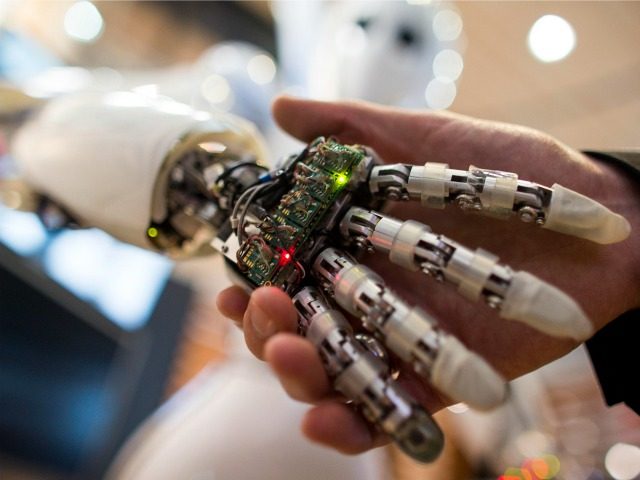The U.S. Air Force is looking for ways to use artificial intelligence to ease its ability to access and analyze the barrage of data acquired by its aircraft, weapons, and satellites as China rapidly closes the gap with America in the race to weaponize computer systems.
“There’s certainly a data aspect piece” of artificial intelligence, or A.I., Gen. Stephen “Seve” Wilson, the vice chief of staff for the U.S. Air Force, declared during the Future of War conference hosted by the New America think tank and Arizona State University on Monday.
“I think we all would agree, maybe, that data is the ‘renewable oil’ of the 21st century,” he added, according to Military.com.
The American general acknowledged that to keep up with the capabilities of adversaries like Russia and China, the Air Force requires a “resilient” satellite network to respond promptly.
“I need to build a network that connects from geosynchronous orbit all the way to subsurface [for] all of our different platforms,” the general proclaimed.
In February, a top U.S. commander expressed concerns that the Chinese military’s A.I. capabilities may soon exceed that of its American counterpart.
Adm. Harry Harris, the chief of U.S. Pacific Command (USPACOM), told a House panel:
I am also deeply concerned about China’s heavy investments into the next wave of military technologies, including hypersonic missiles, advanced space, and cyber capabilities, and artificial intelligence – if the U.S. does not keep pace, USPACOM will struggle to compete with the People’s Liberation Army (PLA) on future battlefields.
Last year, Gen. David Goldfein, the Air Force chief of staff, highlighted the need of “automation” to analyze the deluge of military data, noting at an Air Force Association breakfast in Washington, DC:
We all know there’s a significant [amount] of data that we collect that hits the floor that we never actually look at because we don’t have the analytical capacity … to look at it.
What all the services are heavily leveraging — and looking at industry as well for support — is how do I take that very human-centric methodology that we have today and use artificial intelligence that uses automation, that uses some of the tools that are available, to be able to do that kind of analysis?
In a February 2017 interview with Military.com, Lt. Gen. VeraLinn “Dash” Jamieson, the Air Force’s deputy chief of staff for intelligence, surveillance, and reconnaissance, further elaborated on the military branch’s plan to take intelligence gathering efforts into the future, telling the news outlet:
Before you get to artificial intelligence, you have to get to automation, and what does that mean? It means we’re really developing algorithms, so we then have to build trust in the algorithms … Artificial intelligence is really going to be linked with human and machine getting me to projections, and where it can go to [narrow down] 20 billion faces, let’s say, to the one in a nanosecond.
Gen. Wilson reportedly asserted that “humans will never be totally out of the loop.”
Citing Project Maven, an algorithmic approach used to fight terrorists through video automation, the Air Force general pointed out that the U.S. military is already employing “human-machine teaming” to combat terrorism.”
William Carter, the deputy director for the technology policy program at the Center for Strategic and International Studies (CSIS), warned lawmakers in January that China has developed a plan to “overtake” the United States in the race to militarize artificial intelligence, robotics, and quantum computing.
He noted that Beijing is “rapidly closing the gap” with America.

COMMENTS
Please let us know if you're having issues with commenting.